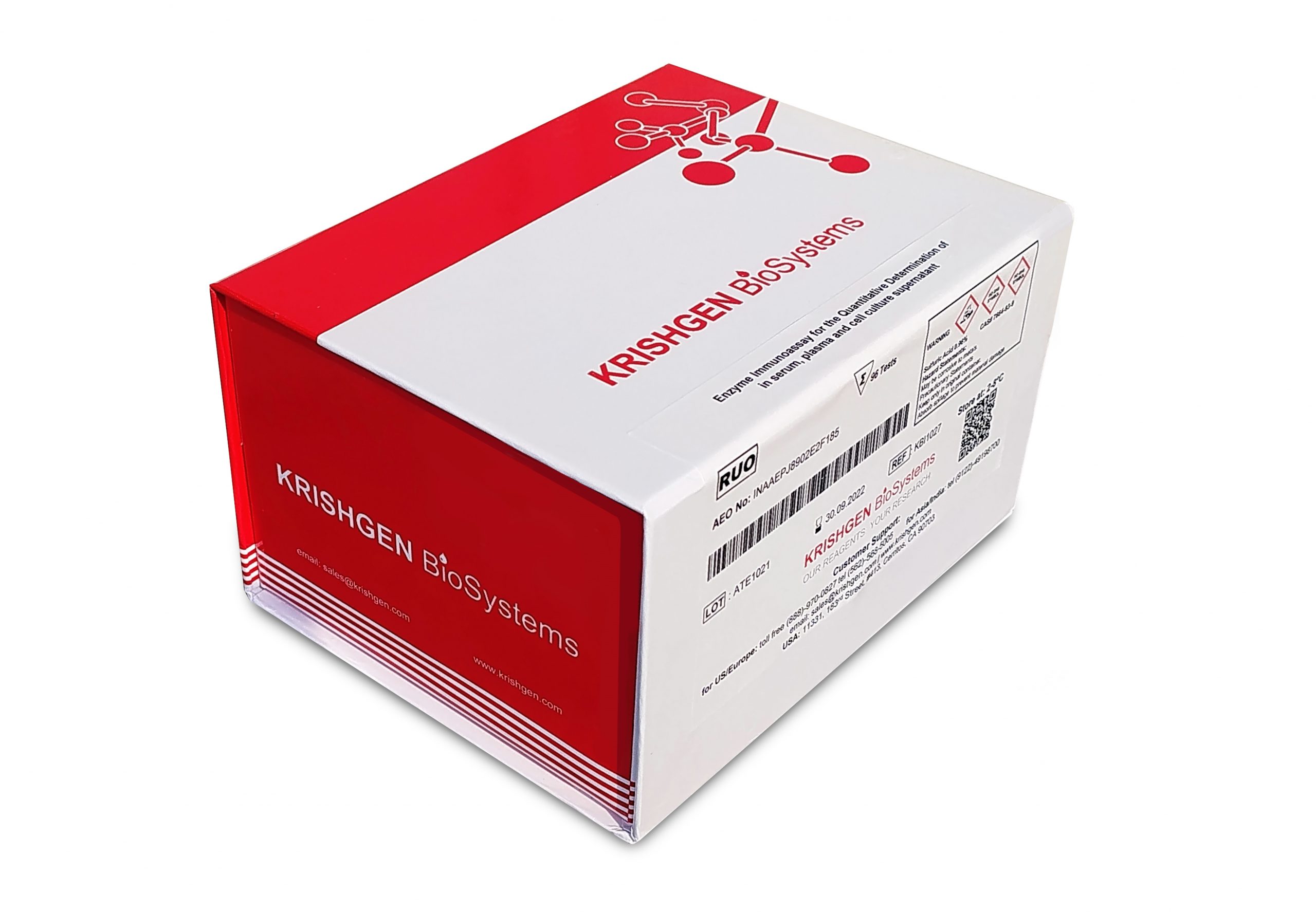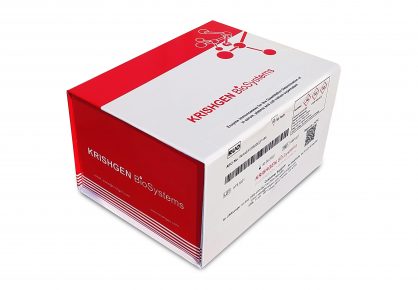SARS-CoV-2 (Covid-19) Alpha Neutralizing Antibody (B.1.1.7) ELISA Assay Kit
The SARS-CoV-2 (Covid-19) Alpha Neutralizing Antibody (B.1.1.7) ELISA Assay Kit is For Research Use Only
Size: 96 wells
Standard Range: 7.825 – 2500 ng/ml
Incubation Time: 3 hours
Sample Type: Serum or Plasma
Sample Size: 100 µL
Assay Principle
The method employs sandwich ELISA technique. The protein-protein interaction between HRP-RBD and hACE2 can be blocked by neutralizing antibodies against SARS-CoV-2 RBD (N501Y). \r\nSamples and controls are pipetted in a blank microtitre plate and incubated with HRP conjugated human SARS-CoV-2 RBD (N501Y) protein. The antibodies to SARS-CoV-2 (N501Y) present in the samples and controls bind to the SARS-CoV-2 RBD (N501Y) protein to form a complex. \r\nThis solution of bound and unbound antibodies to SARS-CoV-2 Variant B.1.1.7 is then pipetted into human ACE2 coated microplate. After washing to remove the bound complex of Anti-SARS-CoV-2 Variant B.1.1.7 and HRP conjugated SARS-CoV-2 RBD (N501Y), the substrate solution (TMB) is added to the microwells. Post incubation, color develops proportionally to the amount of unbound Anti-SARS-CoV-2 (Covid-19) Variant B.1.1.7 present in the sample. Color development is then stopped by addition of stop solution. Absorbance is measured at 450 nm. The method employs sandwich ELISA technique. The protein-protein interaction between HRP-RBD and hACE2 can be blocked by neutralizing antibodies against SARS-CoV-2 RBD (N501Y).
The method employs sandwich ELISA technique. The protein-protein interaction between HRP-RBD and hACE2 can be blocked by neutralizing antibodies against SARS-CoV-2 RBD (N501Y). Samples and controls are pipetted in a blank microtitre plate and incubated with HRP conjugated human SARS-CoV-2 RBD (N501Y) protein. The antibodies to SARS-CoV-2 (N501Y) present in the samples and controls bind to the SARS-CoV-2 RBD (N501Y) protein to form a complex. \r\nThis solution of bound and unbound antibodies to SARS-CoV-2 Variant B.1.1.7 is then pipetted into human ACE2 coated microplate. After washing to remove the bound complex of Anti-SARS-CoV-2 Variant B.1.1.7 and HRP conjugated SARS-CoV-2 RBD (N501Y), the substrate solution (TMB) is added to the microwells. Post incubation, color develops proportionally to the amount of unbound Anti-SARS-CoV-2 (Covid-19) Variant B.1.1.7 present in the sample. Color development is then stopped by addition of stop solution. Absorbance is measured at 450 nm. Samples and controls are pipetted in a blank microtitre plate and incubated with HRP conjugated human SARS-CoV-2 RBD (N501Y) protein. The antibodies to SARS-CoV-2 (N501Y) present in the samples and controls bind to the SARS-CoV-2 RBD (N501Y) protein to form a complex.
The method employs sandwich ELISA technique. The protein-protein interaction between HRP-RBD and hACE2 can be blocked by neutralizing antibodies against SARS-CoV-2 RBD (N501Y). \r\nSamples and controls are pipetted in a blank microtitre plate and incubated with HRP conjugated human SARS-CoV-2 RBD (N501Y) protein. The antibodies to SARS-CoV-2 (N501Y) present in the samples and controls bind to the SARS-CoV-2 RBD (N501Y) protein to form a complex. \r\nThis solution of bound and unbound antibodies to SARS-CoV-2 Variant B.1.1.7 is then pipetted into human ACE2 coated microplate. After washing to remove the bound complex of Anti-SARS-CoV-2 Variant B.1.1.7 and HRP conjugated SARS-CoV-2 RBD (N501Y), the substrate solution (TMB) is added to the microwells. Post incubation, color develops proportionally to the amount of unbound Anti-SARS-CoV-2 (Covid-19) Variant B.1.1.7 present in the sample. Color development is then stopped by addition of stop solution. Absorbance is measured at 450 nm. "}” data-sheets-userformat=”{"2":15105,"3":{"1":0},"11":4,"12":0,"14":{"1":3,"3":1},"15":"Calibri","16":11}”>This solution of bound and unbound antibodies to SARS-CoV-2 Variant B.1.1.7 is then pipetted into human ACE2 coated microplate. After washing to remove the bound complex of Anti-SARS-CoV-2 Variant B.1.1.7 and HRP conjugated SARS-CoV-2 RBD (N501Y), the substrate solution (TMB) is added to the microwells. Post incubation, color develops proportionally to the amount of unbound Anti-SARS-CoV-2 (Covid-19) Variant B.1.1.7 present in the sample. Color development is then stopped by addition of stop solution. Absorbance is measured at 450 nm.
Sample Preparation and Storage
- Specimens should be clear and non-hemolyzed. Samples should be run at a number of dilutions to ensure accurate quantitation.
- Blood is taken by venipuncture. Serum is separated after clotting by centrifugation. Plasma can be used, too. Lipaemic, hemolytic or contaminated samples should not be run. Repeated freezing and thawing should be avoided.
- Samples should be diluted 1:100 (v/v) for optimal recovery, (for example 1 ul sample + 99 ul sample diluent) prior to assay. In cases where matrix interferences is under or over observed, the samples may be diluted less or more respectively with Sample Diluent accordingly.
- The samples may be kept at 2 – 8°C for up to three days. For long-term storage please store at -20°C.
Note: Grossly hemolyzed samples are not suitable for use in this assay.
Products Related to SARS-CoV-2 (Covid-19) Alpha Neutralizing Antibody (B.1.1.7) ELISA
Mouse Anti-SARS-CoV-2 (Covid-19) to spike RBD mutation K417N, E484K, N501Y (South African Variant B.1.135) Quantitative Titration ELISA
Anti-SARS-CoV-2 (COVID-19) IgG Antibody to spike protein S2 Quantitative Titration ELISA Assay Kit
Anti-SARS-CoV-2 (COVID-19) IgG Antibody to Spike Protein S1 Quantitative Titration ELISA Assay Kit


